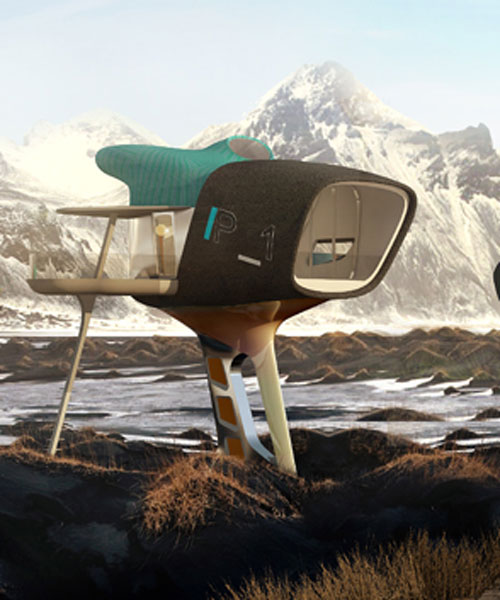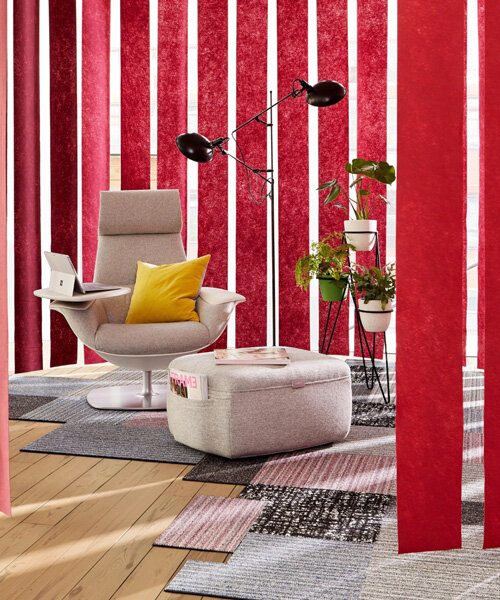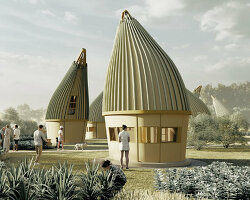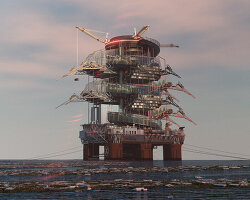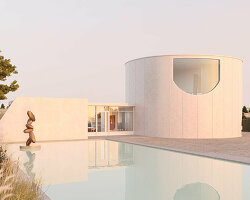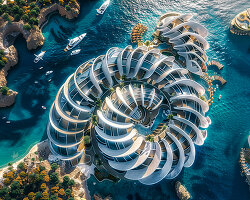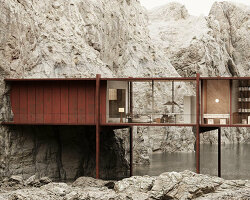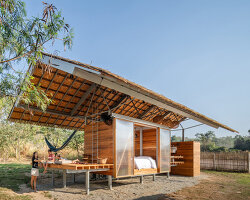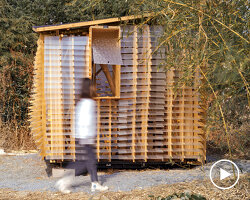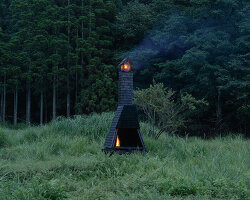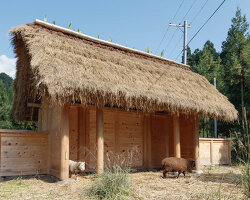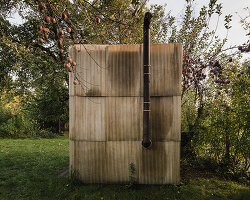architectural studio, envelope architects, offer a futuristic alternative to basic and undesirable trekker cabins. known for their extreme design, the studio’s latest proposal, the ‘perch’, catapults us into the future whilst offering a safe haven for those brave enough to explore the most spectacular of environments.
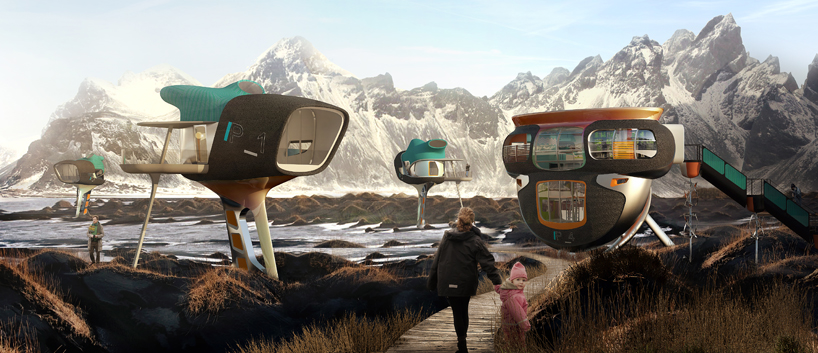
the perch can be positioned on a rock face or on a stilt for support
envelope architects has designed a spacious, three-storey high form, named ‘the perch’, inspired by the idea that living in larger numbers can be both more economical and fun. the neo-lodge will accommodate up to ten dwellers, spreading its’ sleeping alcoves over two floors incorporating several economical features including a photovoltaic (solar power) system which allows the structure to generate its own electricity.
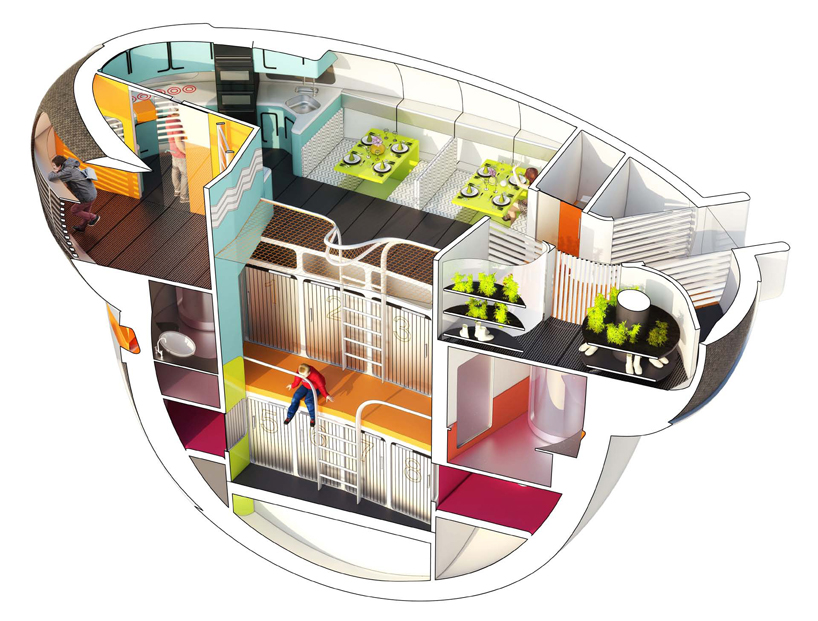
an axonometric diagram of ‘the perch’ showing living quarters for up to ten people
the architectural studio, known for designs that challenge the status quo, have kept the explorer at the heart of their proposal. conceived with ‘off-grid’ spaces in mind, the structure can be lifted into place with a chinook helicopter and is designed to give the weary traveller a good night’s sleep. a spacious interior with excellent views is complimented by a lounging net whilst a cleverly designed floor plan allows guests to partake in ‘leg dangling’, something the studio are great believers of.
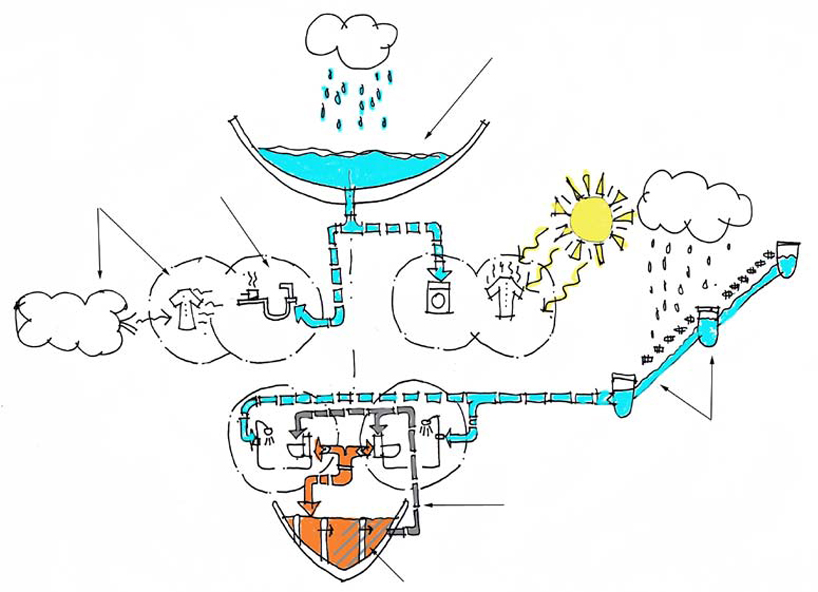
the perch harnesses economical design solutions including rainwater collection
the lodge’s main source of heat is an electric air source heat pump, supplemented by large south facing windows and a part black exterior, concealing solar thermal hot water tubes which maximise heat absorption. this is distributed using an electric under-floor system supplemented by a high-density design where floor is exposed to direct sunlight. this allows spaces, such as those located directly outside the bedroom alcoves, to be heated during the night. concerns of heat loss through ventilation are minimized with the use of a MVHR (mechanical ventilation heat recovery) unit, a method of ventilation which complements the ultra-tight building make up and can reduce ventilation losses by 75 – 90%.

cross section diagram of ‘the perch’ illustrating the lodge’s interior
aware of trekkers tendency to carry vacuum sealed food, the architects design for the perch offers several fresh alternatives. underneath the dining area a mushroom farm can be found whilst lower levels feature algae growing tubes offering explorers low-maintenance, protein rich sustenance. ‘the greenhouse’, a room dedicated to growing, washing and drying, features rotating salad and herb trays which are automatically rotated and drip fed fresh water collected from large snow/rain catchers located on the lodge’s roof. Here, the u-value (a measure of how well a building transmits heat from the inside to the outside) is left purposefully high to encourage melting, further assisted by heating pipework controlled by snow weight and water flow sensors.
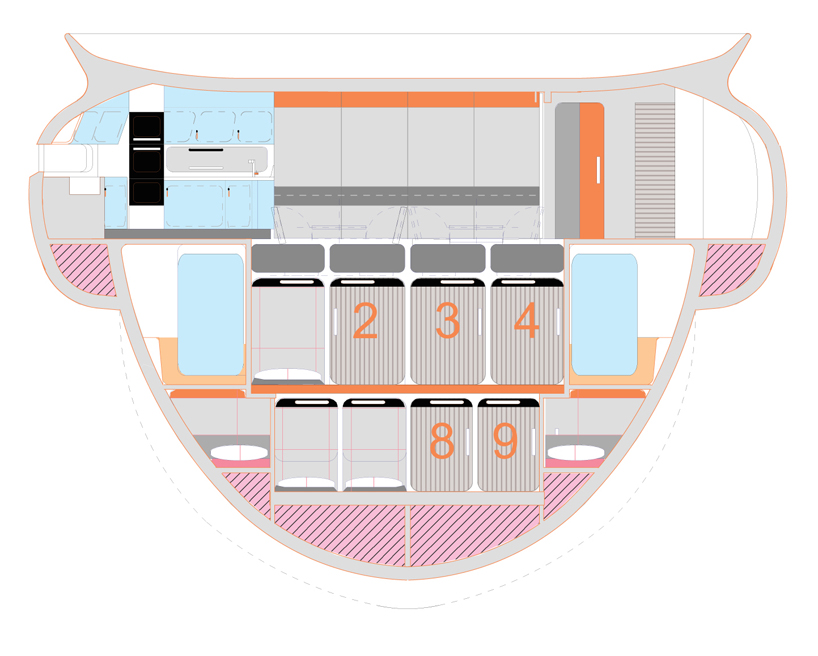
cross section diagram of the perch
frightful conditions a trekker might face are also considered. below the access walkway, grey water is collected supplying sanitary facilities such as toilets and showers. there are also two shower rooms at mid level heated by formed anodized aluminium, which pay homage to buckminster fuller’s dymaxion house, echoing his choice of shape and use of materials. there is space to safely stores rescue and climbing/trekking equipment, communications hardware and other electrical equipment and when the weather is really intense a cleverly designed wind lobby keeps the main accommodation warm.
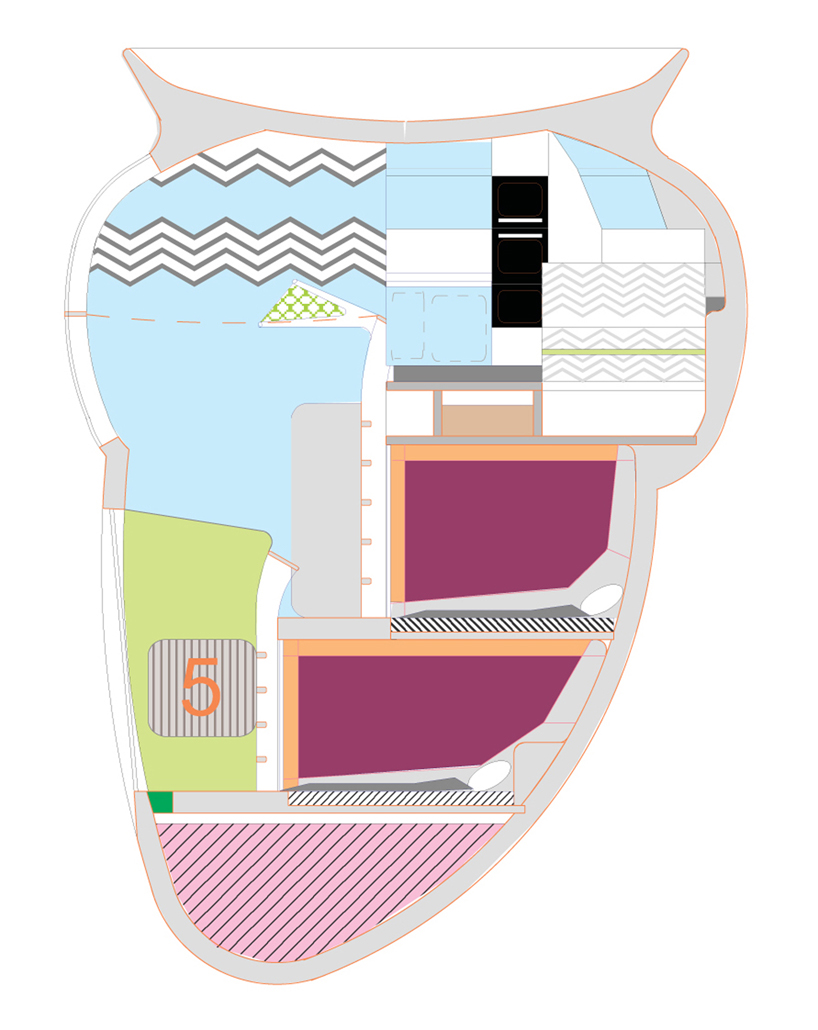
cross section diagram of the perch
another hurdle designers identified in the process was finding a way to utilize solar power outside of peak generation hours, quickly overcome using smart solutions including a number of specified batteries which can be accessed by trekkers when required. the same batteries will be fed by wind turbines located below the access walkway. the overall power system uses a DC (direct current) form, a unidirectional flow of electric charge, which helps to increase overall efficiency and minimize any wasted power.
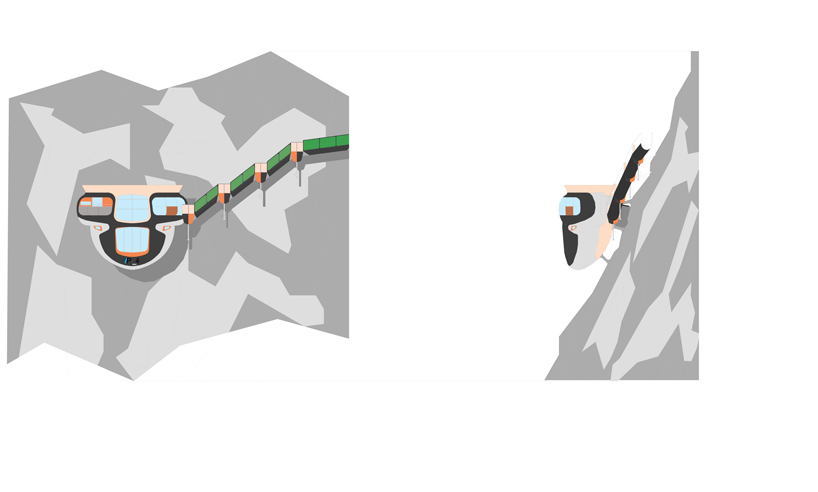
elevation of the perch mounted on a rock face
the designer’s economical approach is also applied to the structure’s wastage system, where they wish to explore the possibility of replicating systems recently built on lodges in the alps. these will allow all liquid borne waste to flow down to the plant room where it will be filtered to allow the majority of the waste to be passed back into the local environment. any residual waste will be compacted for later removal which as a result reduces the overall volume of waste, allowing for very infrequent servicing requirements.
designboom has received this project from our ‘DIY submissions‘ feature, where we welcome our readers to submit their own work for publication. see more project submissions from our readers here.
edited by: kieron marchese | designboom
Save
Save
Save
